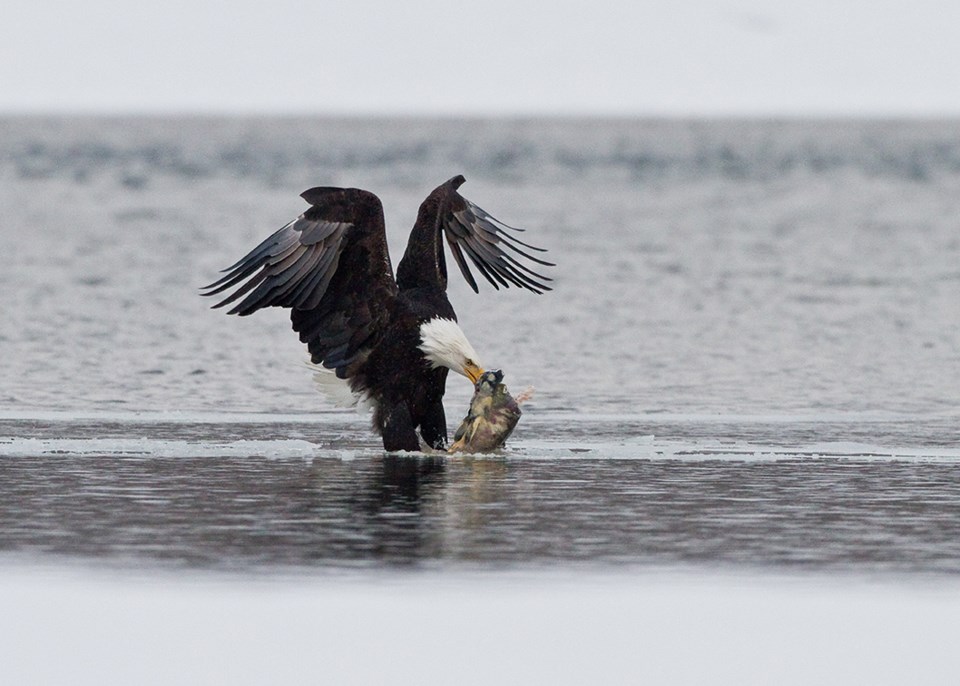Organizers of the hugely popular Eagle Watch program in Squamish are anxiously seeking applicants to replace the retiring coordinator.
Judith Knapp, who was with the program for a decade and served two years as coordinator, retired from the job this year and, so far, no candidates have stepped up to take over.
“At this point, we haven’t had anyone express interest so that’s why we’re trying to cast a broader net,” said Carl Halvorson, chair of the Squamish Environment Society. He said the search is ongoing to fill the paid position.
The program is popular with visitors from around the world and is a boon to local businesses, Halvorson said.
“If you’re a member of the District of Squamish or the Chamber of Commerce or Tourism Squamish, Eagle Watch is certainly an incredible resource because there are a lot of tourists that are attracted to Squamish by the eagles and the Eagle Watch volunteers are constantly directing folks to the restaurants and services,” he said.
The program is also a vital service to eagles because it teaches the thousands of visitors about appropriate ways of viewing eagles without disturbing their habitat.
Established in 1995 as part of the Nature Conservancy of Canada’s Eagles of Brackendale project, the Eagle Watch Volunteer Interpretive Program is coordinated by Squamish Environment Society.
“We have to really protect the eagles from being interfered with,” said Knapp, the past coordinator. She added that, in terms of public education and citizen science, Eagle Watch goes beyond what other communities with large eagle populations do.
“The volunteers keep a record on the number of eagles that are there on weekends each hour while were on duty,” she said.
“We can check when they arrive, how many are in the area and get an idea of when they leave.”
The migration patterns depend on weather in the far north and on the salmon run.
“Usually, eagles start coming at the end of October,” she said.
“They are following the food. They come up to Squamish in the winter and eat a lot to get through the cold winter and then off they go to their summer grounds where they mate and they raise their young and then the whole cycle begins again.”
Bald eagles spend most of the year in the Yukon, the Northwest Territories and Alaska.
“When the water freezes there, the eagles move down here,” Knapp said.
Last year, 50 volunteers helped visitors from all over the world learn about the eagles and Knapp said response is extremely enthusiastic.
“Many people have never seen a live eagle in their lifetime,” she said. “Some of them will come back three or four times in a day just to get another view. Or if they’re on their way to Whistler, they’ll say, ‘I’m coming back tomorrow. Are you going to be here?’”
Halvorson is asking people to consider themselves or people they know for the position of coordinator.
“If people are interested in Eagle Watch and interested in taking on a role, they can go online to the Squamish Environment Society’s website,
squamishenvironment.ca,” he said.
Everyone is also welcome to learn more at the annual general meeting at the Brackendale Art Gallery on Oct. 23 at 7 p.m.



